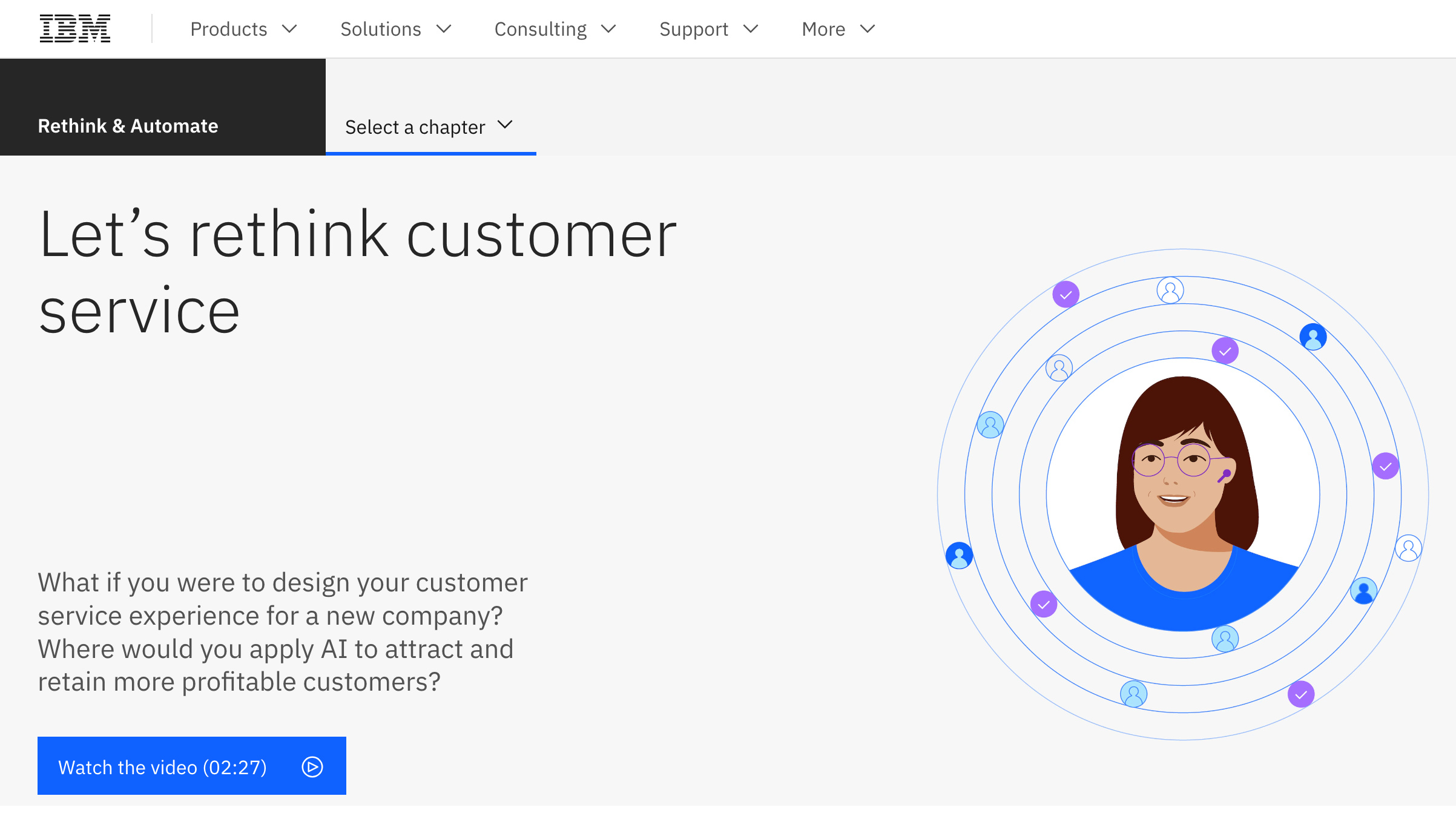The reality of mass AI-linked job cuts is here
The trickle of AI-related job losses will inevitably lead to a torrent, and we’ve been naive to the dangers


The prospect of mass job cuts linked with artificial intelligence (AI) has been a looming specter in the wake of the recent generative AI boom.
Concerning Goldman Sachs research published in March warned that up to 300 million jobs could be lost due to the rise of generative AI platforms in the years to come. The study predicted roughly 18% of work could become computerized and that workers in ‘advanced economies’ would bear the brunt of AI-linked job losses.
Society has long feared AI will pose a threat to jobs and livelihoods; it’s a fear that goes back several decades. But the prophecies never came to pass, and the reality of AI – at least over the last ten years – has been relatively dull.
The recent wave of job losses, however, shows this simply isn’t any longer the case. The threat we’ve shrugged off for being too abstract is finally here, with organizations capitalizing on the power of generative AI tools to deliver cost-savings and “streamline operations”.
Death by a thousand cuts
BT showcased this latter goal – which roughly translates to “why hire human workers when we can automate tasks” – perfectly when it announced plans to lay off tens of thousands of workers and automate a myriad of roles.
These brutal workforce cuts will see the telecoms giant lay off up to 40% of its workforce by the end of the decade to become a “leaner business”, and focus heavily on integrating AI within key organizational processes.
RELATED RESOURCE

Making the switch
Realise the benefits of IP technology ahead of the digital ‘switch-on’
Anywhere up to 10,000 of these positions set for the chopping block could be replaced by AI, the Telegraph reported. That’s a serious chunk of the workforce automation will render obsolete.
Sign up today and you will receive a free copy of our Future Focus 2025 report - the leading guidance on AI, cybersecurity and other IT challenges as per 700+ senior executives
BT framed this shift as a direct response to sluggish growth; it recorded a 1% year-on-year decline in revenue while profits dipped 12%. But it’s naive to take this rationale at face value.
In reality, the penny has dropped for businesses. Operating amid a period of tightening purse strings and a possible recession, AI offers a get-out-of-jail-free card for businesses already salivating at the prospect of cutting staff costs – only this time they can limit the operational pressure these cuts might create.
BT isn’t alone here. IBM, last month, revealed it would pause hiring for non-customer-facing roles and eventually replace these with AI, according to CEO Arvind Krishna. He told Bloomberg the hiring freeze includes for back-office departments like HR, with the tech giant expecting thousands of jobs to be automated in the years to come.
Around 7,800 non-customer-facing roles could be replaced due to AI, Krishna noted, which equates to around 30% of staff currently occupying these roles. Kudos to IBM: at least they’re being upfront in warning staff they’ll eventually be consigned to the scrap heap – but this will come as little consolation.
We’ve been blind to the AI warning signs
Sam Altman, CEO at OpenAI, the organization behind ChatGPT, has made no secret of the potential risk to human workers, especially in recent months. Altman told ABC News in March he was a “little bit scared” of the detrimental impact of generative AI on the global labor market.
He said “it’s going to eliminate a lot of current jobs”, but then added “we can make much better ones”. With Altman concerned, yet still pouring money into the field, it’s safe to say workers should be anxious, and angry, about the future. Industry leaders have also failed to clarify exactly how businesses plan to make “better” jobs following AI-induced workforce cuts.
The expectation that an individual who, for example, has worked in HR for decades will suddenly be presented with a raft of new, exciting opportunities after losing their job is ridiculous, and ignores reality. Re-skilling is hard enough as it is, and changing careers is a luxury few can afford.
Related link
AI was once feared as a tool that would eventually replace human jobs. But these fears gave way to optimism that it could instead augment roles. What we refer to as AI – largely machine learning – has developed into tools that can relieve the burden of repetitive tasks in favor of more fulfilling ones.
Businesses, however, will embrace mass automation in the calculated manner we’ve come to expect over the years. Many workers will rightfully peer over their shoulder and wonder what cost saving plans the c-suite is plotting. With HR, customer-facing roles, and even jobs in software development potentially at risk due to generative AI, there will be no reprieve for roles in the crosshairs. This trend has been a trickle for months, but it’ll inevitably become a torrent that sweeps up thousands, if not millions, more roles across the labor market.

Ross Kelly is ITPro's News & Analysis Editor, responsible for leading the brand's news output and in-depth reporting on the latest stories from across the business technology landscape. Ross was previously a Staff Writer, during which time he developed a keen interest in cyber security, business leadership, and emerging technologies.
He graduated from Edinburgh Napier University in 2016 with a BA (Hons) in Journalism, and joined ITPro in 2022 after four years working in technology conference research.
For news pitches, you can contact Ross at ross.kelly@futurenet.com, or on Twitter and LinkedIn.
-
 I couldn’t escape the iPhone 17 Pro this year – and it’s about time we redefined business phones
I couldn’t escape the iPhone 17 Pro this year – and it’s about time we redefined business phonesOpinion ITPro is back on smartphone reviews, as they grow more and more intertwined with our work-life balance
-
 When everything connects, everything’s at risk
When everything connects, everything’s at riskIndustry Insights Growing IoT complexity demands dynamic, automated security for visibility, compliance, and resilience
-
 Can robots work safely alongside humans? This one industry leader thinks we're not far away
Can robots work safely alongside humans? This one industry leader thinks we're not far awayNews Humanoid robots and people will be able to work truly side-by-side this year, according to the CEO of one leading robotics company.
-
 The power of AI & automation: Proactive IT
The power of AI & automation: Proactive ITWhitepaper Automation strategies to dynamically and continuously assure cost-effective application performance
-
 Magic Quadrant for enterprise conversational AI platforms
Magic Quadrant for enterprise conversational AI platformsWhitepaper An evaluation of the conversational AI platform (chatbot) market
-
 Let's rethink customer service
Let's rethink customer servicewhitepaper Discover new ways to improve your customer service process
-
 The power of AI & automation: Productivity and agility
The power of AI & automation: Productivity and agilitywhitepaper To perform at its peak, automation requires incessant data from across the organization and partner ecosystem
-
 Digitization solves manufacturing’s five toughest challenges
Digitization solves manufacturing’s five toughest challengesWhitepaper Discover the technology trends that overcome manufacturing’s challenges, from cyber resilience to breaking free from legacy technology
-
 The four pillars of excellence for technology leaders
The four pillars of excellence for technology leaderswhitepaper Download this CIOs business case for integration and automation
-
 Building a strong business case for GRC automation
Building a strong business case for GRC automationwhitepaper Successfully implement an innovative governance, risk & compliance management platform